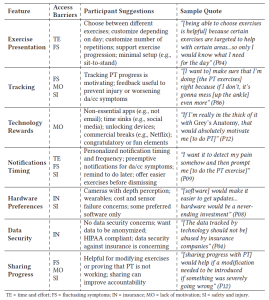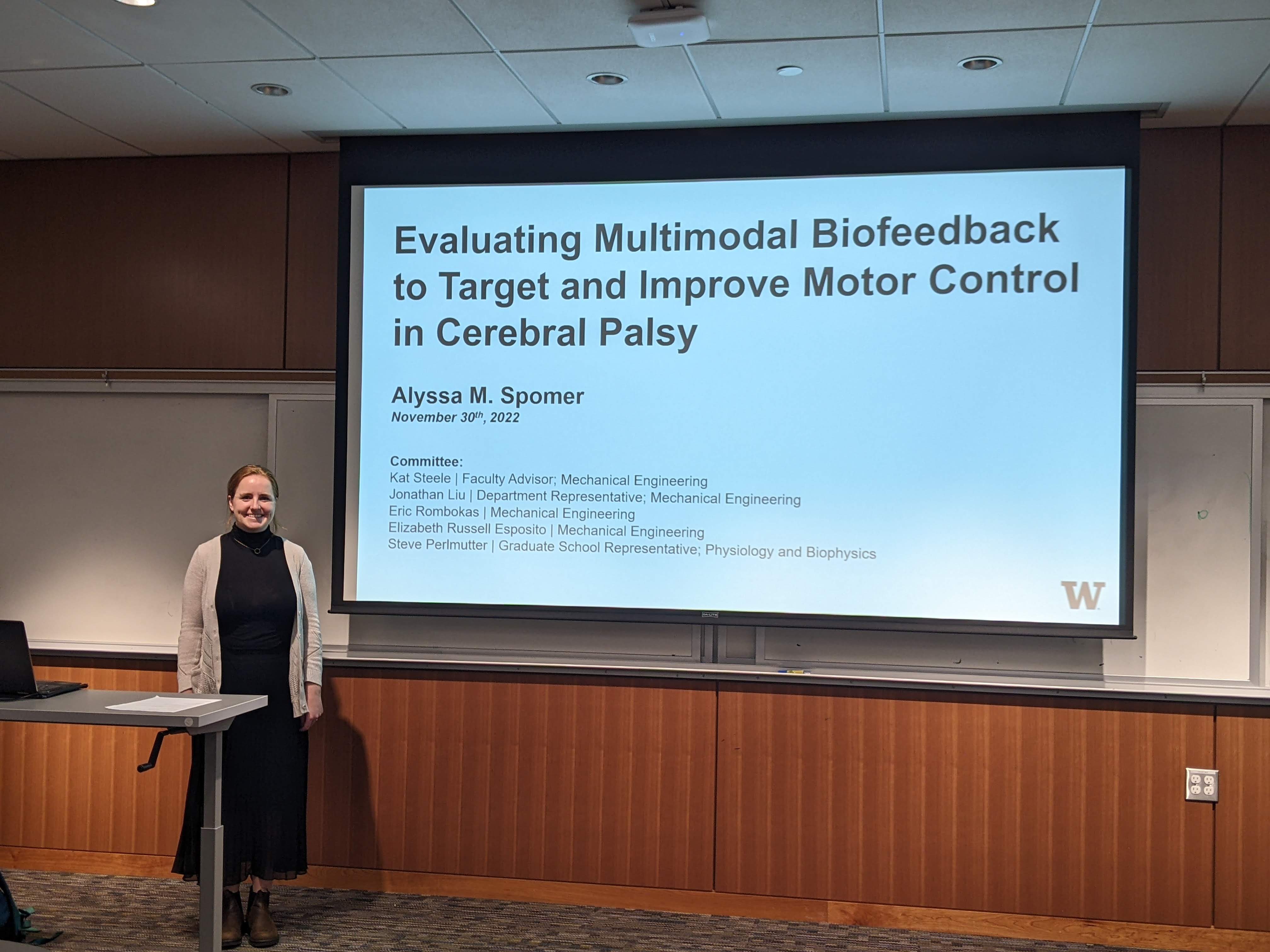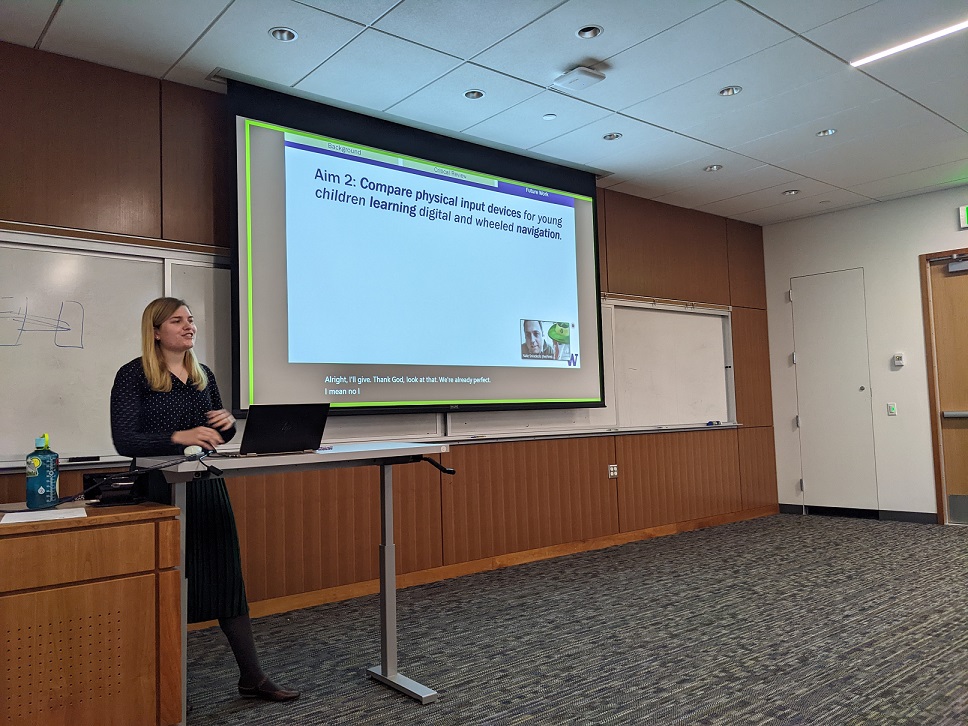Congratulations to Dr. Alyssa Spomer on earning her Doctorate in Mechanical Engineering! Dr. Spomer’s PhD thesis dissertation was titled Evaluating multimodal biofeedback to target and improve motor control in cerebral palsy. Congratulations and best of luck as you move forward as a Clinical Scientist at Gillette Children’s. Best of luck in Minnesota!
Congratulations Mia! Mia Hoffman passes her Ph.D. Qualifying Exam
Congratulations, Charlotte! Charlotte Caskey passes her Ph.D. General Exam
M Yamagami, K Mack, JC Mankoff, KM Steele (2022) “’I’m Just Overwhelmed’: Investigating Physical Therapy Accessibility and Technology Interventions for People with Disabilities and/or Chronic Conditions”
Journal Article in ACM Transactions on Accessible Computing
Many individuals with disabilities and/or chronic conditions (da/cc) experience symptoms that may require intermittent or on-going medical care. However, healthcare is an often-overlooked domain for accessibility work, where access needs associated with temporary and long-term disability must be addressed to increase the utility of physical and digital interactions with healthcare workers and spaces.
 Aim: Our work focuses on a specific domain of healthcare often used by individuals with da/cc: physical therapy (PT).
Aim: Our work focuses on a specific domain of healthcare often used by individuals with da/cc: physical therapy (PT).
Methods: Through a 12-person interview study, we examined how people’s access to PT for their da/cc is hampered by social (e.g., physically visiting a PT clinic) and physiological (e.g., chronic pain) barriers, and how technology could improve PT access.
Results: In-person PT is often inaccessible to our participants due to lack of transportation and insufficient insurance coverage. As such, many of our participants relied on at-home PT to manage their da/cc symptoms and work towards PT goals. Participants felt that PT barriers, such as having particularly bad symptoms or feeling short on time, could be addressed with well-designed technology that flexibly adapts to the person’s dynamically changing needs while supporting their PT goals.
Interpretation: We introduce core design principles (adaptability, movement tracking, community building) and tensions (insurance) to consider when developing technology to support PT access. Rethinking da/cc access to PT from a lens that includes social and physiological barriers presents opportunities to integrate accessibility and adaptability into PT technology.
Congratulations to Nicole Zaino on being named a Gatzert Child Welfare Fellow
 Nicole was selected from a extremely competitive application pool to become a 2022 Gatzert Child Welfare Fellow. This fellowship will support Nicole in her research and as she writes her dissertation contributing to the lives of children with disabilities. Way to go Nicole! ConGATZERTulation!
Nicole was selected from a extremely competitive application pool to become a 2022 Gatzert Child Welfare Fellow. This fellowship will support Nicole in her research and as she writes her dissertation contributing to the lives of children with disabilities. Way to go Nicole! ConGATZERTulation!



